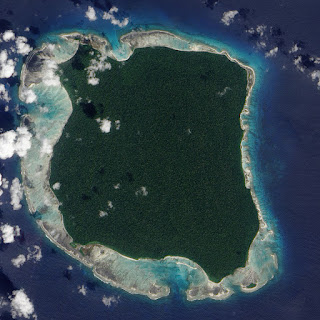There were press reports last week of a "missionary" (shouldn't that job title be banned in the 21st century?) trying to visit the small population of the North Sentinel Island in the South Pacific, who found a sticky end in a hail of arrows. (See Michael Safi's reports in the Guardian on the event, his motivations, and the aftermath. Update 30.11.2018, here's another one)
This reminded me of a feature I wrote on uncontacted tribes back in 2015, defending their right to remain uncontacted, swiftly drawing criticism from academics who were at the time arguing in support of contacting efforts, along the lines of "if only they knew all the benefits of our civilisation, they would want to be contacted". Well I have lived long enough to know the benefits of our civilisation and I have my doubts about that line of argument.
Anyhow. Here is my 2015 piece which that idiotic "missionary" clearly hadn't read:
How to protect the last free-living humans

North Sentinel Island (wikipedia)

















